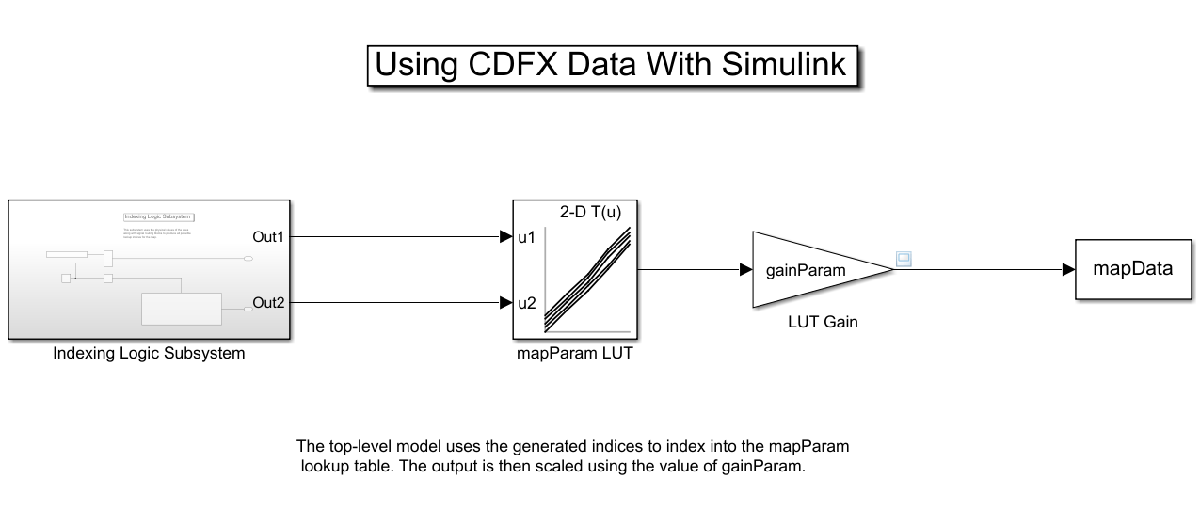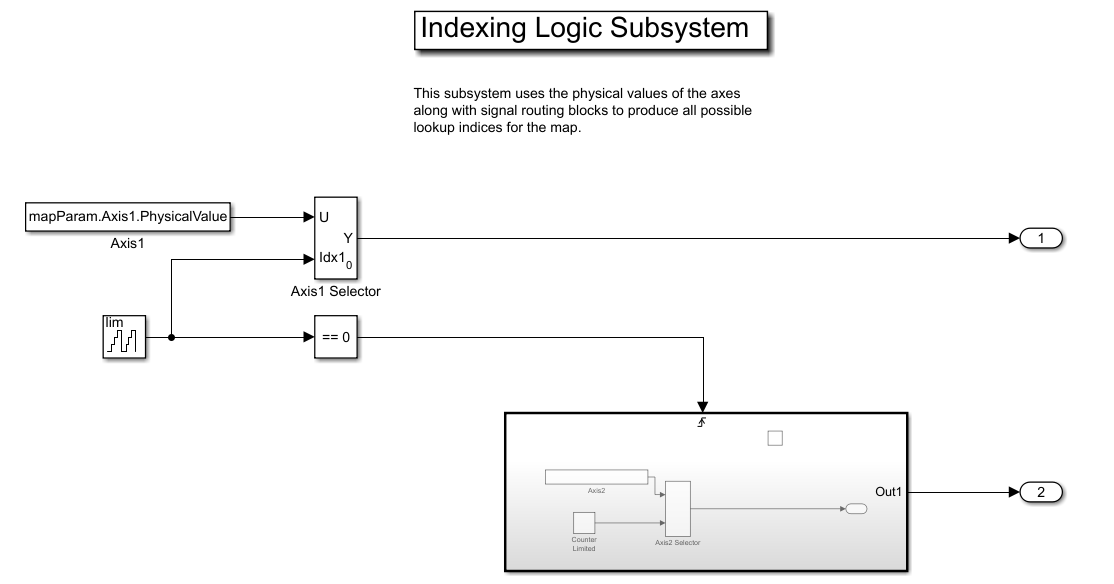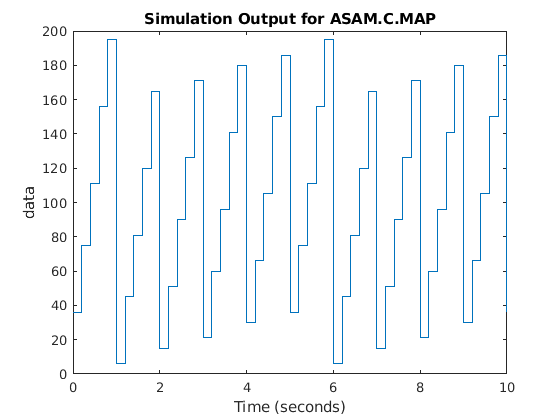Use CDFX-Files with Simulink Data Dictionary
This example shows how to store calibration data from an ASAM CDFX-file in a data dictionary and use these values as parameters to a Simulink® model.
Import Data
Import the calibration data using the cdfx function.
cdfxObj = cdfx("CDFXExampleFile.cdfx")cdfxObj =
CDFX with properties:
Name: "CDFXExampleFile.cdfx"
Path: "/bat365/home/rollinb/Documents/MATLAB/Examples/vnt-ex73237310-20190405222527/CDFXExampleFile.cdfx"
Version: "CDF20"
Create and Populate Data Dictionary with Calibration Data
Use getValue to extract the desired parameters into the MATLAB® workspace.
dictName = "CDFXExampleDD.sldd"dictName = "CDFXExampleDD.sldd"
Check if dictionary is already in the working folder.
if isfile(dictName) % If data dictionary exists, open it. dDict = Simulink.data.dictionary.open(dictName) else % If dictionary does not exist, create it and populate with CDFX data. dDict = Simulink.data.dictionary.create(dictName) ddSection = getSection(dDict, "Design Data") addEntry(ddSection, "gainParam", getValue(cdfxObj, "ASAM.C.SCALAR.GAIN")) addEntry(ddSection, "mapParam", getValue(cdfxObj, "ASAM.C.MAP")) end
dDict =
Dictionary with properties:
DataSources: {0×1 cell}
HasAccessToBaseWorkspace: 0
EnableAccessToBaseWorkspace: 0
HasUnsavedChanges: 0
NumberOfEntries: 2
Display contents of the data dictionary.
listEntry(dDict)
Section Name Status DataSource LastModified LastModifiedBy Class Design Data gainParam CDFXExampleDD.sldd 2019-04-05 22:33 rollinb double Design Data mapParam CDFXExampleDD.sldd 2019-04-05 22:33 rollinb struct
Link Data Dictionary to Simulink Model
Open the Simulink model, then use set_param to link the existing data dictionary to your model. This will allow the model to access the values defined within the dictionary.
open_system("CDFXSLDDModel.slx");
cdfxMdl = gcscdfxMdl = 'CDFXSLDDModel'
set_param(gcs, "DataDictionary", dictName)We can now close the connection to the data dictionary.
close(dDict)
Lookup-Gain Model

This model contains:
2-D Lookup Table block to represent the
ASAM.C.MAPparameter from the CDFX-file. The "Table data" field represents the physical value of the instance, and the "Breakpoint" fields represent the physical values of the axes.Gain block to represent the
ASAM.C.SCALAR.GAINparameter from the CDFX-file.To Workspace block to log the simulation data.
Indexing Logic Subsystem
The Indexing Logic subsystem uses the physical values of the axes of the ASAM.C.MAP parameter, along with signal routing blocks and a triggered subsystem, to produce all valid combinations of lookup indices. This configuration can be useful if you need to test across the full range of possible input values of a calibration parameter.

Log Output Data in MATLAB
The output of the simulation is sent to MATLAB by the To Workspace block, where it is stored as a timeseries object called mapData. This data can now be inspected and visualized in the MATLAB workspace.
sim(cdfxMdl);
plot(mapData)
title("Simulation Output for ASAM.C.MAP")
% Copyright 2018-2021 The bat365, Inc.
